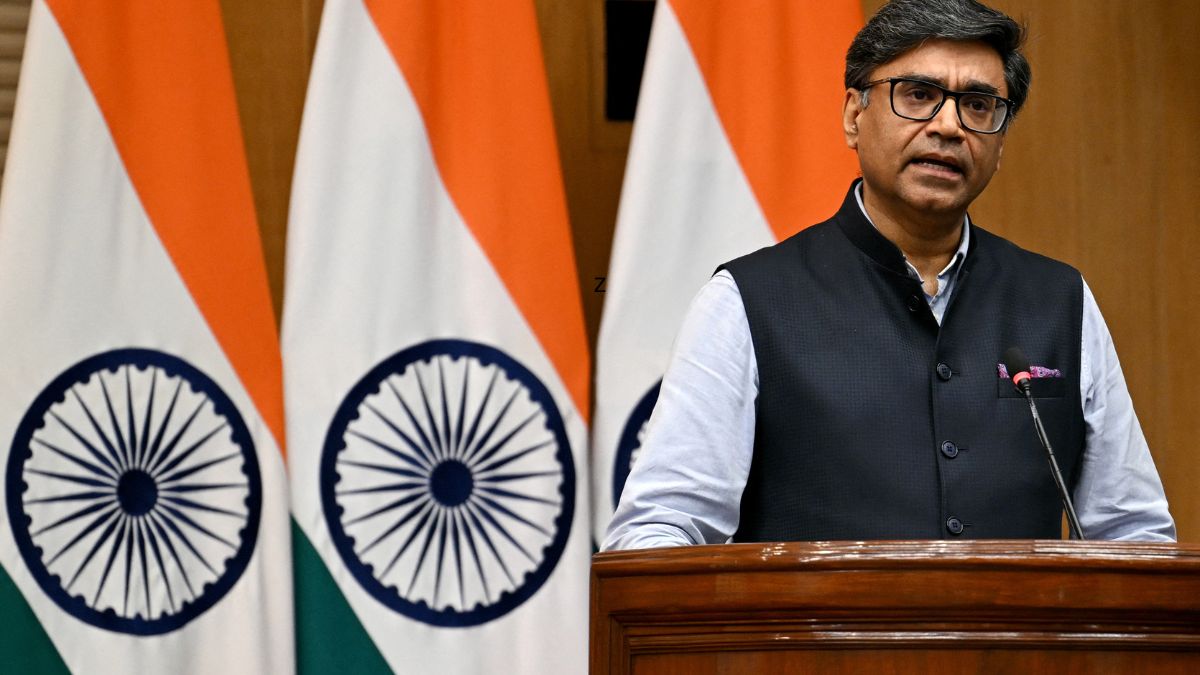India and Pakistan had been going back and forth for days.
A drone war had broken out between the countries and a full-fledged conflict looked inevitable.
Then, suddenly, news of a ceasefire was announced – to the shock of many around the world – by US President Donald Trump on X.
“India and Pakistan have agreed to a full and immediate ceasefire” Trump wrote on his Truth Social platform on Saturday night.
Trump claimed the deal occurred “after a long night of talks mediated by the United States.”
But what happened? How did India and Pakistan reach a ceasefire? Here’s the inside story
Vance reaches out
CNN reported that US Vice President JD Vance called Prime Minister Narendra Modi on Friday (May 9).
The development came just a day after Vance stated that the US would not get involved between India and Pakistan.
“What we can do is try to encourage these folks to de-escalate a little bit, but we’re not going to get involved in the middle of war that’s fundamentally none of our business,” Vance told Fox News.
Catch India-Pakistan ceasefire LIVE updates here“You know, America can’t tell the Indians to lay down their arms. We can’t tell the Pakistanis to lay down their arms. And so, we’re going to continue to pursue this thing through diplomatic channels,” Vance said.
So, what changed?
First let’s briefly examine the events leading up to the call.
India on May 7 had launched Operation Sindoor in response to the Pahalgam terror attack.
India carried out drone strikes on terror bases in Pakistan and Pakistan-occupied Kashmir .
Pakistan responded with repeated missiles, drone attacks – all of which were foiled – and cross-border shelling.
India responded by disabling an air defence system at Lahore.
As per CNN, the US on Friday claimed it received “alarming intelligence” which sent its top leadership into a flurry of action.
Vance, Secretary of State Marco Rubio and White House Chief of Staff Susie Wiles had all been monitoring the situation between India and Pakistan.
In fact, Rubio had on 8 May already spoken to India’s Minister of External Affairs Jaishankar about immediate de-escation”.
Rubi also offered “US support for direct dialogue between India and Pakistan and encouraged continued efforts to improve communications”.
But the latest intelligence led all three to believe that the US needed to get involved in the conflict – without wasting any time.
Vance, after speaking to Trump, called Modi.
Vance in his phone call told Modi the US thought a “high probability of dramatic escalation” was likely over the weekend.
Vance asked Modi to talk to Pakistan directly and “consider options for de-escalation.”
Vance, Rubio and others then began reaching out to officials in India and Pakistan.
As per Indian Express, Rubio, who is also acting National Security Adviser, also called Army Chief General Asim Munir – the most powerful man in Pakistan and whom many believe responsible for the conflict.
Rubio told Munir that the US “offered assistance in starting constructive talks in order to avoid future conflicts.”
The US officials explained Washington’s efforts thus.
“There was a lot of effort going on to try and tamp down escalation earlier in the week, and it was clear at that point that the two sides weren’t talking,” one of the officials told CNN.
“The goal earlier this week was to encourage India and Pakistan to talk with our counterparts and figure out a path to de-escalation through a ceasefire, and through the course of those conversations, US officials were able to gain insights into what those potential off-ramps look like for both sides, and be able to help relay that message and bridge some of that communications divide, which then allowed the two sides to actually talk and get to the point where we are now,” the official added.
But the ceasefire still didn’t come.
India strikes PAF bases, Pak seeks ‘urgent intervention’
Then on Saturday (May 10), the Indian Air Force (IAF) launched a series of strikes on Pakistan Air Force (PAF) bases.
AS per NDTV, the IAF hit several PAF bases critical to the Pakistani military including Chaklala near Rawalpindi and Sargodha in Punjab province with Brahmos cruise missiles.
Pakistan by then believed its nuclear command infrastructure including in places like Rawalpindi might be under threat.
Islamabad then contacted the US asking for “urgent intervention.”
The US is then believed to have told Pakistan in no uncertain terms – use the military hotline and deescalate immediately.
As per T_he Times of India,_ at 9 am, Pakistan’s Director General of Military Operations Maj Gen Kashif Abdullah reached out to India’s DGMO Lt Gen Rajiv Ghai.
Abdullah was calling to take the temperature on a possible ceasefire.
Abdullah also mentioned the conversation Rubio had with his boss Munir.
Ghai then ran the conversation of the chain of command – however, he received no instructions from his bosses to respond.
In fact, foreign secretary Vikram Misri at an 11 am briefing did not even mention the phone call from Pakistan.
When the ceasefire was announced, the US tried to take credit.
“I am pleased to announce the Governments of India and Pakistan have agreed to an immediate ceasefire and to start talks on a broad set of issues at a neutral site,” Rubio wrote.
Rubo added:
Vance wrote on X, “Great work from the President’s team, especially Secretary Rubio. And my gratitude to the leaders of India and Pakistan for their hard work and willingness to engage in this ceasefire.”
However, Indian officials insisted that it was a strictly bilateral agreement and that no third party was involved, as per Indian Express.
But Misri, confirming the call at a press briefing later, said the talks were held directly between the DGMOs.
India on Saturday also announced that it would take any new terror attack as an “act of war” and would respond accordingly.
With inputs from agencies
)